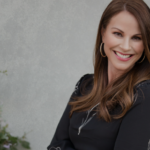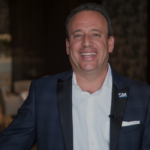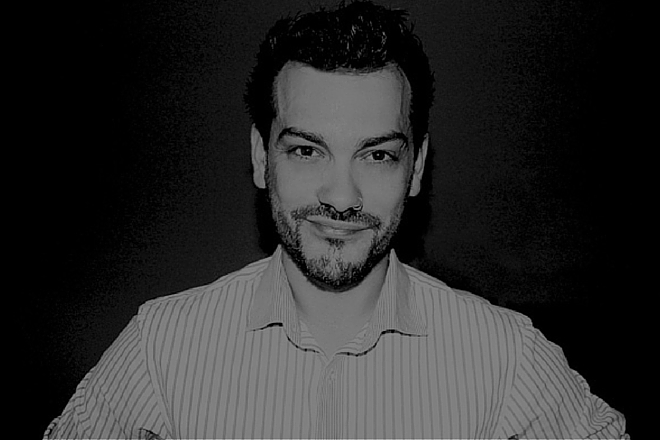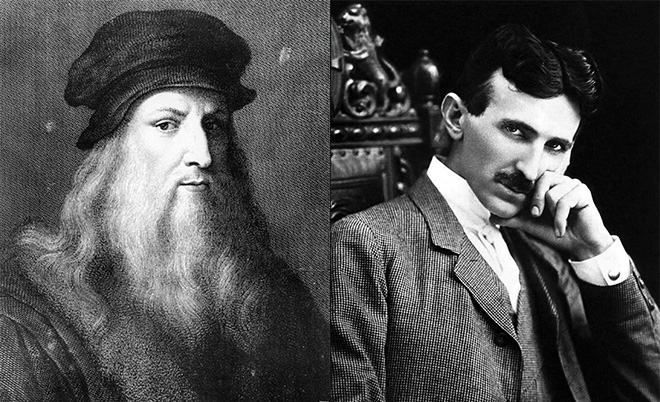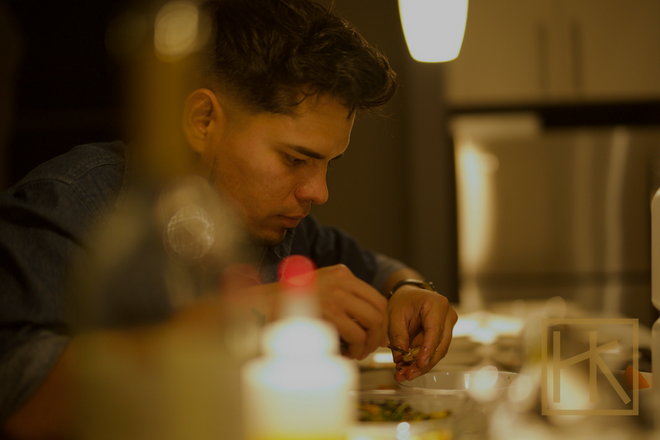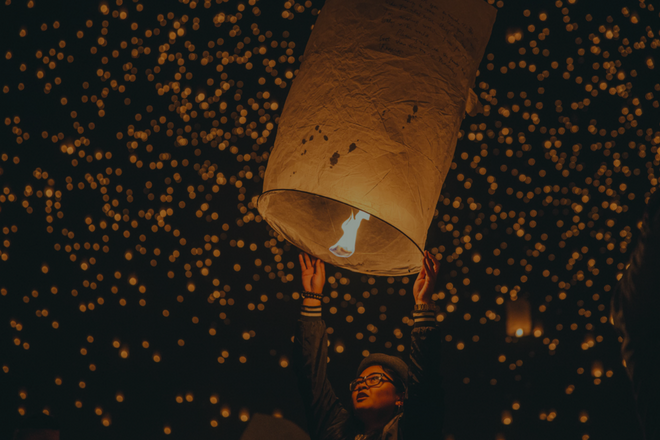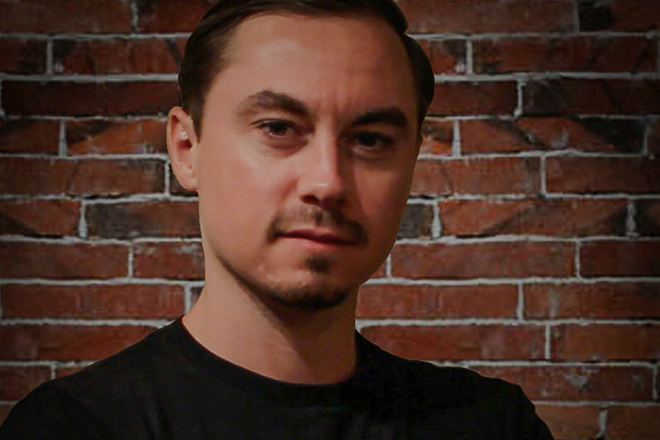“We want to expose people to different forms of creativity, culture and art whilst entertaining them . . . It’s never been about the making zillions or world domination, we just enjoy being able to link the two and bring everyone together.”
Creator Profile:
Alex Wain + So Bad So Good
Creator: Alex Wain (@alexwain) – alexwain.com
Company: So Bad So Good & Nothing Cooler
Location: Sydney, Australia
Website: SoBadSoGood.com & NothingCooler.com
Words of Wisdom – For all the hype and giant numbers you see around the web, FB pages with millions of followers, articles with hundreds of comments, remember this – everyone started at zero.”
At the beginning of each “Creator” profile article, I have started to document a few extra thoughts on my journey to meet global entrepreneurs and creators. Without a doubt, I continue to be inspired! Not just because these individuals take the risk to put themselves out there and build something in the wake of skeptics and critics, but because they do so with such openness, transparency and willingness to adapt
I am not only in awe of the way people construct new ideas and forge new concepts, but these individuals carry character traits that are beyond selfless. They are always thinking of the bigger picture and connecting the dots. I immediately felt that way about Alex Wain and his company So Bad So Good.
In fact, I read an article Alex posted on LinkedIn, What Actually Happens When Your Post Gets 1.3M Likes on Facebook?, and I quickly found myself drawn in. The article was real, it was honest and it was enlightening. I’ve been around the digital world for quite some time and I appreciated Alex’s truth about what makes content go viral, which is “as good as a guess as anyone.”
Sorry agencies, you never really know what makes something go viral.
From there, I discovered Alex co-founded SoBadSoGood.com, a Sydney-based website that “hunts down the most interesting pop culture trends of the day, so you don’t have to,”
Our posts cover design, photography, animation, sculpture, illustrations, street art, documentaries and literature right through to the weird, wonderful and infinitely sharable. Our focus is to act as a creative hub, where you can be inspired, amused and entertained every day.
And that’s exactly why I immediately contacted Alex.
As I perused through the site, I found myself drawn to the fact that they were delivering content in a very unique way. While the masses of “Pop Culture” websites focus on the same stories and repurpose each other’s content, Alex, along with co-founder Daniel Reyes and Co., curate the truly unique things we might not have otherwise known about.
The things we might have missed, but need to find out because they are so fascinating that they even exist.
In his words,
We’re quite particular about the type of content we expose to our audience, people trust us to give them value and not deceive them with throwaway content. There’s no shortage of material on the web, but we have a certain tone and aesthetic which we adhere to, so there’s certainly a degree of quality control that takes place.
Sound familiar? H&DF is all about finding the unique and bringing it to the masses. The rising stars you “might” not have otherwise been exposed to.
Oh yeah, So Good So Bad also has a long list of places they’ve been featured such as BuzzFeed, the Washington Post, Huffington Post, and two little publications otherwise known as The Wall Street Journal and The New Yorker to name a few.
And their community, well . . . navigate to their “About” page and you’ll find they’ve created one that includes HUGE notable fans. However, I’ll let you find that out when you visit their site.
As I proceeded to contact Alex, I thought to myself, “This guy has to be so busy that I may not hear from him.” Less then several hours later, I woke up to a personal email from him and we immediately understood each other’s visions. Half way around the world and we get each other. Awesome!
In connecting with Alex, I learned about his fascination with the web, what he learned from his time spent at MySpace, his love for Australia, the importance of listening to your audience as you build your website and what you can achieve when you put a lot of passion into something and grow it. That’s our motto too!
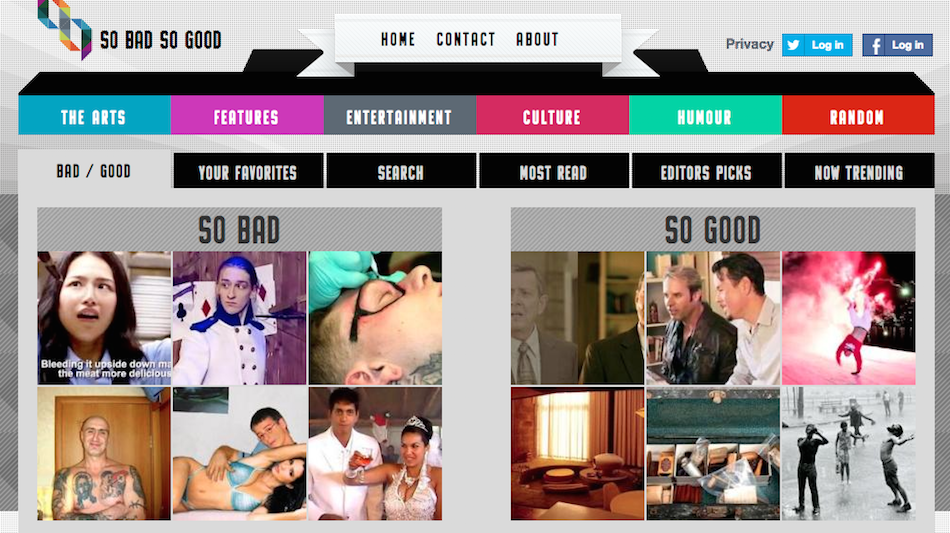
HDF: Alex!!! Thank you so much for taking the time to allow me to interview you!
Alex: Thanks! I really appreciate you reaching out and I’m certainly keen to get involved.
HDF: Alex, you were right, SoBadSoGood.com is addicting! Before we get into the site and what you’ve created, can you tell me a little bit more about your background?
Alex: So glad you’re enjoying it. I’m originally from the UK, but I moved to Australia in 2000 when I was 18. I’ve been here 15 years now and everything you read about it being one of the greatest places in the world to live is true.
There’s a genuine warmth and camaraderie amongst the incredibly diverse and multicultural Australian public. An inherent belief in the idea of fairness, being positive and giving people opportunity, which creates a great working environment. There’s little ego or elitism because everyone is in it together.
There are obviously different levels of equality, but it’s nowhere near as dramatic as it is in the UK or the US where the divide between rich and poor is quite confronting.
Australians by and large really believe in supporting each other, either in the form of partnerships at work or banding together to help those in need. Virtually all my friends donate and do charity work. They’re not the exception either, its actually just the norm in this country.
Only last week I was waiting at the bus stop wearing my soccer jersey going to the match when two guys pulled up in a car who were both supporters and offered me a lift to the stadium.
To me that’s a very Aussie thing to do, that real sense of mateship. That would never happen in London for example.
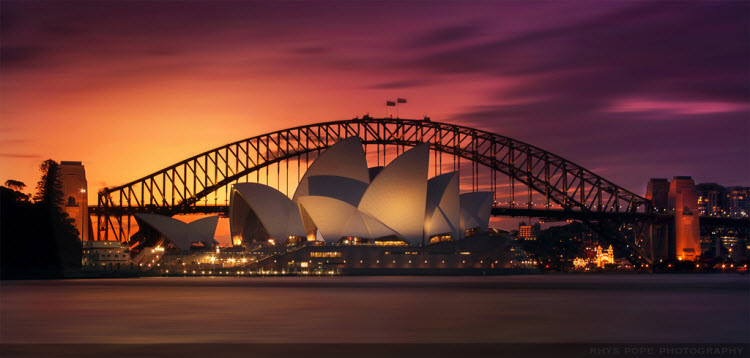
Photo Courtesy of Visitnsw.com | Image © Rhys Pope
HDF: I’ve countlessly heard the same about Australia over and over again. So, what were you doing before you co-founded So Bad So Good? Were you always in to pop culture, content and the Web?
Alex: I’ve always been fascinated by the web, its always played a role in shaping my career.
It all started when I used GeoCities (remember that?!) for the first time back in the mid 90’s. It just totally blew my mind. There I was creating a “webpage” using this clunky interface that allowed you to move and drag all these elements around the page and save it.
My webpage was utterly hideous obviously, but it sowed the concept in my mind that you could use the web as a creative medium.
So in the 1990s I was posting clipart to my tragic GeoCities profile and signing my own guestbook, now I’m posting content from all these inspiring and creative individuals to an audience of millions. So really, when you frame it like that, not much has changed!
In terms of career, I started working at record labels looking after their street teams and digital campaigns, before heading to the world of mobile music and content, including spending some time writing at Rolling Stone magazine.
But it all came together in my role at MySpace, I was the content manager in Australia when it first launched back during the golden era in 2006. At the time it was the perfect job for me, a blend of music, digital and the new emerging world of social.
It was akin to a startup because it exploded so quickly, but it had the funding from News Limited so the perks and money were great too. We had the budget to gain traction and really have an impact.
In many ways whilst So Bad So Good is a new venture for me, when I look back at my career its actually the natural progression of all that experience and knowledge. From using GeoCities to create online, to learning what type of content resonated with people at MySpace and everything in between. It’s all played a role in how the site has developed into its current form.
At the core of it all, is that my passion and interest in pop culture hasn’t changed. The only thing that has is that this time around I get manage my own hours!
HDF: Yeah, time management on your terms is a beautiful thing. Now, how did you come up with the concept for So Bad So Good? I mean, I definitely see how it was bound to happen given your background.
Alex: I’d like to impress you by saying we had this grand master plan all along, but the reality is very very different.
I can safely say hand on heart we never created the site with the intention of building a publishing business. Its success has surprised me more than anyone. It’s all grown organically from being a bedroom blog into what it is now.
My focus at MySpace was obviously to source content that people would engage with, but I’d often find all kinds of interesting stories, clips, images and gifs that didn’t quite fit with the tone of the site or it was a bit too avant-garde frankly to be featured.
So instead I’d email them to my friends and post them to my wall just because I really enjoyed them. Some of it was really random, but that was half the fun because everyday was different.
However, it increasingly became really arduous trying to find them again, trawling through hundreds of emails or scrolling back to infinity through your newsfeed trying find the link you posted or image you shared.
That’s when I decided to create So Bad So Good, a place where I could store all those weird things I’d found in the far corners of the Internet, without having to spend hours going back searching for it. That was the entire motivation behind the creation of the site itself.
My co-founder Daniel Reyes (who also worked at MySpace at the time) helped me setup the site on his server after work back in July 2011 and we used a $45 WordPress theme for the design.
At the end of each day, I’d come home, login and post to it. From there it just grew organically because people started tuning into the type of content we were featuring.
HDF: I can easily see how that could happen. (Laughing). Your content is crazy addictive. I jumped on to the site and one thing led to another which led to another. Lol. How do you go about curating all of it? Is it just you? Can you tell me a little bit about the audience or the numbers of visits you’re seeing?
Alex: When it comes to curating, I primarily source the content, although we have a few talented writers also helping us generate articles we think our audience will love.
Together, we scan the web, different blogs, sites, artists, creators and forums to try and seek the most interesting stories of the day. In that sense every day is a new challenge and unique because you’re never quite sure what you might stumble across.
You have to have a deep passion for it because you can spend hours clicking away until you find something that really appeals to you.
We’re quite particular about the type of content we expose to our audience, people trust us to give them value and not deceive them with throwaway content. There’s no shortage of material on the web, but we have a certain tone and aesthetic which we adhere to, so there’s certainly a degree of quality control that takes place.
I’d rather post 3-4 articles a day that are compelling, rather than 15 posts around cat gifs or Justin Bieber’s hair. We obviously try and find content that potentially appeals to a large audience, but if we don’t get a kick out of initially, we don’t feature it.
Despite being based in Australia the vast majority of our traffic comes from the US, and slightly skewed towards females aged between 25-35. Our numbers do fluctuate depending on the response to the content we share, but as an average you’re talking around 1.5-2M unique visitors each month.
A Few Topics You’d Expect To Find on So Bad So Good
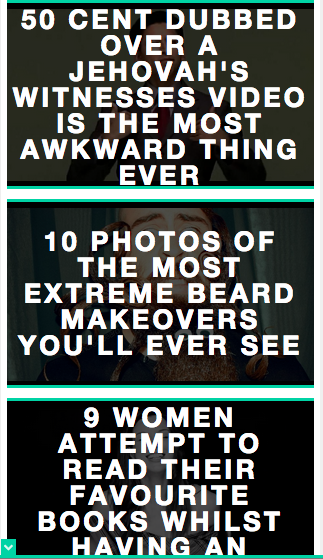
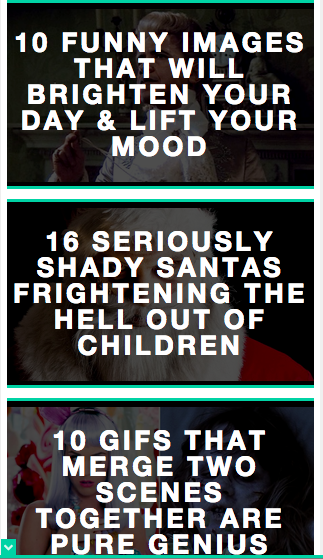
HDF: Well, you certainly have a knack for creating and building a community. As an entrepreneur and business professional, what’s the best part about “creating” for you?
Alex: The real reason and motivation behind the creation of the site has always been the same, we want to expose people to different forms of creativity, culture and art whilst entertaining them.
There’s more to life than watching reality TV or reading about what product Kim Kardashian is endorsing right now, that’s what we want to remind people of.
We have nothing but respect for those working in the arts. We know it’s a really tough gig trying to make a living from your art and passion, so being able to feature their work and promote them to a global audience is a really rewarding feeling. It means everyone is a winner.
Our community hopefully feels inspired or entertained by the stories we share with them. Artists gain exposure to a new audience that can help drive sales or expand their following and we’re able to sustain a modest living by facilitating the entire process.
It’s never been about making zillions or world domination, we just enjoy being able to link the two and bring everyone together.
HDF: Have there been any obstacles along the way, either at an earlier age or more recent, that taught you valuable lessons? Any that you’d like to share?
Alex: Around 1.5 years ago we did a redesign of the site without consulting anyone, we thought we knew what our audience would want and the features they would use. It’s an understatement to say we got a little carried away. It wasn’t arrogance on our part but it was definitely a case of being incredibly naive about things.
We wrongly assumed that because people enjoyed our stories, they’d enjoy every aspect of the redesign. But the result was people found it too confusing, too muddled and too dramatic. The font wasn’t legible enough, the navigation was clunky, pages took to long to load and the functionality just wasn’t there.
To give you and example, in order to make the site neater, we decided to create a slideshow option where you can cycle left and right to scroll through images. It turns out that people actually prefer to scroll up and down in a list format, rather than going from left to right.
When you think about it, it’s simpler to flick up and down on mobile, as opposed to tapping “next, next, next,” all the time. It’s a small example, but it had big implications on the time people were willing to spend on the site and how much content they viewed.
Its true that people complain about change for the sake of complaining but we could see from our statistics that the response to the redesign was poor. We received more than a few frustrated emails.
Today, our traffic across mobile and tablets is around 60% of our entire audience, yet we have a site that isn’t optimized for mobile or designed to be responsive. That’s because we spent so long second-guessing what people wanted, that the technology and way they interact with our site had dramatically shifted.
With the forthcoming redesign we’ve been tracking to see the navigation paths they take, where they leave, where they enter, the technology they’re using and asking them for feedback along the way. It’s allowed us to understand and side step the mistakes of the past.
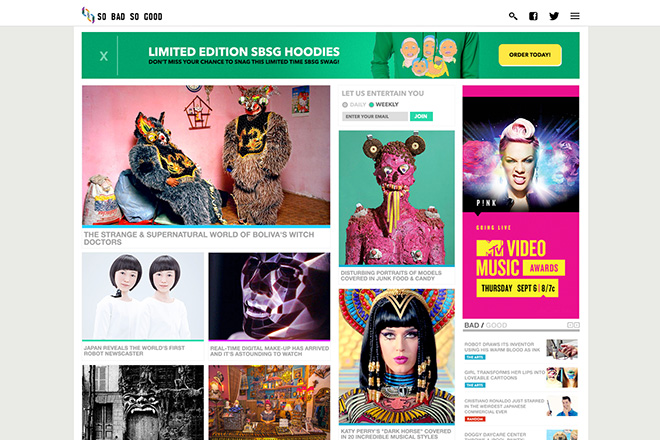
So Bad So Good Site Redesign
We have to adapt and cater to their needs if we want to continue to be a viable business. It was certainly a tough lesson to learn but a valuable one. It seems so simple on reflection, the art of just listening to your audience but that’s something we foolishly overlooked because we didn’t do our research.
Our primary focus now is to constantly give them the best functionality based on their habits, their needs and their device – not create an experience in a vacuum without any data or consultation.
HDF: What’s the best advice you can give someone just starting out in creating an online website or blog, or just curating a community online?
Alex: Be passionate about it, because when you are it actually doesn’t seem like work and when it doesn’t seem like work, you’re more likely to persevere with it.
For all the hype and giant numbers you see around the web, FB Pages with millions of followers or articles with hundreds of comments remember this – everyone started at zero.
Even Huffington Post or Buzzfeed with their huge audiences went through a phase where only 10 people had viewed their website. It seems strange to think about it, because they’re such big brands these days – but everyone has to start somewhere.
They exist today because someone was motivated enough to build those audiences, now look at the success they’ve become. So it’s possible, don’t ever think it isn’t. So Bad So Good is a very small example of what can be achieved if you’re truly focused and passionate about your interest.
I’d also recommend focusing on a niche, if you’re going to start a fashion blog why not base it around just shoes? Or if you’re interested in food, launch a blog that encapsulates everything related to cupcakes. Whatever you enjoy researching, try zeroing in on it.
There’s a few reasons for doing this, a smaller more specific audience is worth a lot more to advertisers that a broad and generic one. Whilst defining your content might seem restrictive at first, it actually allows you to stand out from the crowd.
Do you want to be “just another food blog” or THE blog about cupcakes? Some of the most successful bloggers I know have built up large communities and audiences by catering to a specific interest or theme, so its definitely something to keep in mind.
HDF: How important has social media played in the building of your brand to date? How important do you think it will be as you continue to grow it?
Alex: Simply put, without social media we wouldn’t be in business. Social is the lifeblood of the site, because generating conversations and having people share your stories creates surges in activity, which in turn drives engagement, views and ultimately revenue. Few people search for our stories, everybody shares them.
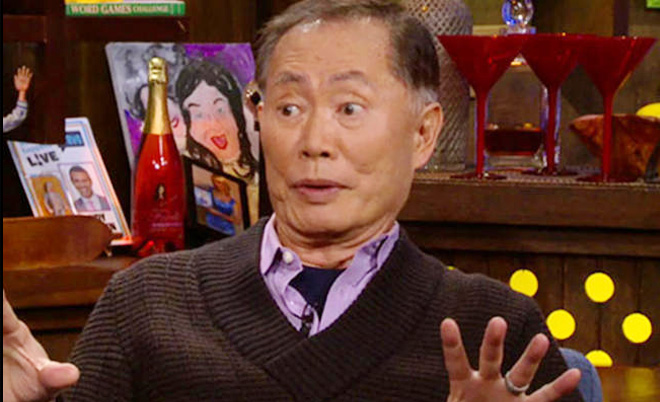
George Takei
Social media has the potential to send astronomical amounts of eyeballs to your site – George Takei posted a link to one of our stories on Facebook and within 24hrs 2M people had visited us to read it.
That kind of traffic was unheard of before the creation of social. So from that perspective, it provides the opportunity to open up a lot of doors for you.
If you can increase engagement and revenue, you can invest that into building an app, hiring staff, upgrading your technology or generating richer experiences for people to enjoy.
That’s one angle. The second is the ability to form a two-way relationship with the community. That’s one of the things I enjoy most about it actually.
Being able to post something out to 200K people and go “I love this, what do you think? is really satisfying. I really enjoy reading the comments around everything we post. There are some extremely funny people on the web and some seriously smart individuals too.
When you think about it, before social that level of engagement was all locked down by moderators in forums or restricted to guestbooks and email forms. It’s a much more open world now.
Gaining consistent traction through social is certainly an art. It takes a lot of dedication and trial and error. But if you get it right, the benefits can far exceed the negatives.
HDF: I feel like a lot of new entrepreneurs don’t understand the importance of time? How long did it take before you so SoBadSoGood.com really started to take off? What do you think was the inflection point?
Alex: I totally agree with you there. I remember a quote from Twitter founder Biz Stone that said “Timing, perseverance, and ten years of trying will eventually make you look like an overnight success.” and it really stuck with me. We’ve been working on So Bad So Good every single day since July 2011.
The tipping point came when we posted a story titled ’25 Handy Words That Simply Don’t Exist In English’ which ended being shared by thousands of people. That was where it all started, suddenly this huge audience was exposed to all of our other posts and from there it snowballed.
But it doesn’t happen overnight. You might get 50K readers one day and then tomorrow 5K come back, then you get 100K readers and 10K come back, each time we were able to build that core audience bit by bit.
It’s that foundation that has allowed us to grow, they’re avid fans of the site and its through them that our content gets shared to the wider world.
Over 3 years, over 40M people have visited us, which is incredible when you consider our lack of staff, infrastructure and funds, but we really worked damn hard for every one of those individuals.
In our personal lives we made a lot of sacrifices as well, you can ask my girlfriend, she’s always complaining about how I don’t sleep enough! But I’ve always been of the opinion that anything worth doing, is worth doing right.
Now in the era of social anyone can become an seemingly instant success, you can have your video or photo go viral but its the ability to sustain that level of interest and momentum that defines entrepreneurs from the one-hit wonders.
Sadly, there are no shortcuts.
HDF: If you could meet any innovative entrepreneur throughout all of history, who would it be and why?
Leonardo Da Vinci | Nikola Tesla
Alex: It’s hard to go past Leonardo da Vinci isn’t it? He was gifted at everything he applied his mind to.
To be a painter, sculptor, architect, musician, mathematician, engineer, inventor, anatomist, geologist, cartographer, botanist, and writer all in one – he was the ultimate entrepreneur wasn’t he?
There hasn’t been anyone like him with the ability to excel in each of those fields. I’d like to spend a day with him listening to his views on the Internet and its impact on future generations. I’m sure he’d have some sage words of wisdom to share!
He’s closely followed by Nikola Tesla not just because he was a visionary in the field of electrical engineering, but because he was also a showman and futurist. There’s something to be said about the ability to combine science with a little bit of magic. He’d be an equally fascinating person to spend some time with, hearing about his vision and predictions for technology in the years ahead.
HDF: Alex, this has been awesome!! Seriously! Is there anything else you’ve got going on?
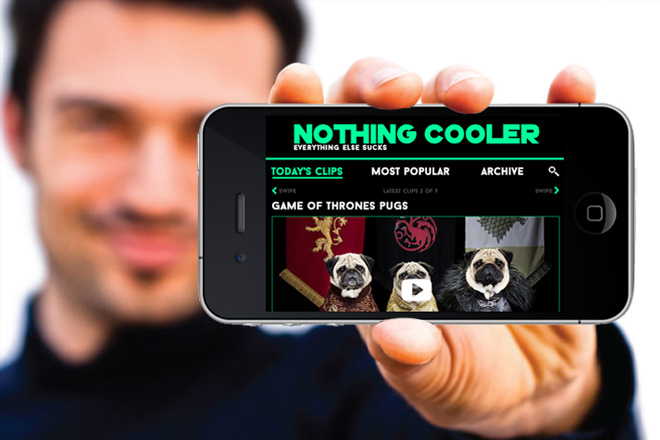
Nothing Cooler | NothingCooler.com
Alex: Yeah, we’re going to be officially launching our new curated video site nothingcooler.com in the coming weeks. Right now we’re just getting it up to speed to allow people to have a deeper experience when they first visit the site.
It’s primarily designed for mobile, so if you’re tired of looking at food pics and selfies on Instagram, head over to Nothing Cooler for a daily dose of awesome.
HDF: I’m always looking for something different and a deeper experience. That sounds great! Thanks again for allowing me to interview you! Incredible background!
Alex: Thanks Matt! I really enjoyed doing this and the whole process. I really dig the angle / mission statement with HDF Magazine (Hustle & Deal Flow™). To have a space where you can really have a candid conversation with those who are trying to disrupt and forge new businesses I think really is something special.
HDF: Thank you! That truly means a lot!
###
